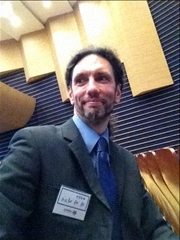Tutor HuntResources Anthropology Resources
Tang Hao And His Quest For The Origins Of A Tradition
Chinese researcher Tang Hao debunked the myths about the creation of two martial art groups
Date : 10/02/2015
Author Information

Uploaded by : Tommaso
Uploaded on : 10/02/2015
Subject : Anthropology
In Imperial China martial arts were hardly at the centre of interest, unless for a specific personal purpose. Few important historical figures showed such an attitude: Among them, for instance, the Tang poet Du Fu?? (712-770) . The majority of the practitioners learned it for a military career. The general cultural pressure made by the literati elite and the poor educational level of their fellows prevented their full development.
During the passage from the Imperial period to the Republican Period, martial arts experienced an unusual kind of national re-evaluation, due more to the result of the anti-Manchu sentiment, first, and also to the introduction of the new Western ideas in China, rather than to a renewed cultural interest. Since then, Wushu has been considered as the Chinese counterpart to the European physical education.
Starting from the 1920's few organisations grew with the scope of spreading these disciplines in order to strengthen the body of the nation and transform the "Dongya bingfu???? (Sick men of Asia)" into a strong, proud population. Among them the Zhongyang guoshuguan ????? (Central Martial Skill Committee), the Jingwu tiyuguan ????? (Pure Martial Skill Centre). Members of the Guomindang, eventually, supported it; they saw in that a useful tool of politic anti-foreign propaganda. They left more than a political trace; they changed its name from Wushu (Martial Skill) into Guoshu (National skill).
On the popular side, this went together with the belief in myths of their creation. Among the few publications, we still find the name of Bodhidarma, as the founder of the Shaolin Temple fighting skill, and the name of Zhang Sanfeng, as the founder of the Taiji quan, art tight to the Wudang Mountain. Shaolin si and Wudan shan are two places, respectively in Henan and Hubei, where some of the popular fighting methods have been taught. Shaolin si is usually associated with the so-called waijia (External group) ; Wudang shan is usually associated with the neijia (Internal group).
During the 1950's, in works concerning Chinese studies, scholars frequently associated martial arts with the esoteric Daoist religious practices without exploring in detail their origins and transmission; they contributed, in this way, to the spread of their obscurity and legends. In Joseph Needham's works he recognises the presence of the legendary element without an attempt of going beyond it. This was also the result of a certain academic trend much alive in that period and partially still today.
Only recently, a different attitude has emerged among a few scholars. Together with the focus on the textual research and criticism, this different perspective has cast a different light on the martial arts world.
This resource was uploaded by: Tommaso
